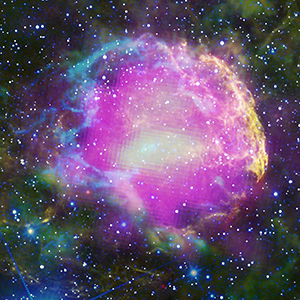
The goals of the Cosmic Ray and Neutrino Science Interest Group (CR SIG) are to provide quantitative metrics and assessments to NASA in regard to current and future needs of the cosmic-ray astrophysics community and to act as a focal point and forum for the cosmic ray community.
CR SIG will work towards producing a white paper covering:
The CR SIG is open to the scientific community.
If you are interested in contributing to the work of the CR SIG, please subscribe using the link below.
Subscribe to the
Cosmic Ray and Neutrino SIG News and Announcements Email List.